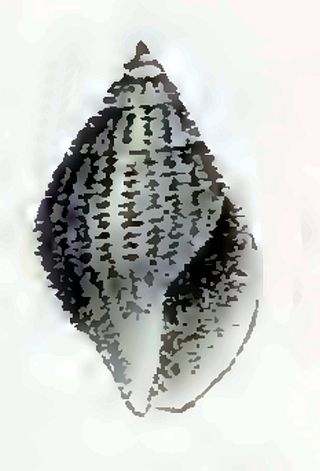In biology, taxonomy is the scientific study of naming, defining (circumscribing) and classifying groups of biological organisms based on shared characteristics. Organisms are grouped into taxa and these groups are given a taxonomic rank; groups of a given rank can be aggregated to form a more inclusive group of higher rank, thus creating a taxonomic hierarchy. The principal ranks in modern use are domain, kingdom, phylum, class, order, family, genus, and species. The Swedish botanist Carl Linnaeus is regarded as the founder of the current system of taxonomy, as he developed a ranked system known as Linnaean taxonomy for categorizing organisms and binomial nomenclature for naming organisms.

Palmaria palmata, also called dulse, dillisk or dilsk, red dulse, sea lettuce flakes, or creathnach, is a red alga (Rhodophyta) previously referred to as Rhodymenia palmata. It grows on the northern coasts of the Atlantic and Pacific Oceans. It is a well-known snack food. In Iceland, where it is known as söl[ˈsœːl̥], it has been an important source of dietary fiber throughout the centuries.

Oscillatoria is a genus of filamentous cyanobacterium which is often found in freshwater environments, such as hot springs, and appears blue-green. Its name refers to the oscillating motion of its filaments as they slide against each other to position the colony facing a light source. Oscillatoria reproduces by fragmentation, facilitated by dead cells which separate a filament into separate sections, or hormogonia, which then grow. Oscillatoria uses photosynthesis to survive and reproduce. Each filament of oscillatoria consists of trichome which is made up of rows of cells. The tip of the trichome oscillates like a pendulum. In reproduction, it takes place by vegetative means only. Usually the filament breaks into a number of fragments called hormogonia. Each hormogonium consist of one or more cells and grow into a filament by cell division in one direction.

The Nostocaceae are a family of cyanobacteria that forms filament-shaped colonies enclosed in mucus or a gelatinous sheath. Some genera in this family are found primarily in fresh water, while others are found primarily in salt water. Other genera may be found in both fresh and salt water. Most benthic algae of the order Nostocales belong to this family.

Charles Atwood Kofoid was an American zoologist known for his collection and classification of many new species of marine protozoans which established marine biology on a systematic basis.

Solariellidae is a family of small sea snails, marine gastropod mollusks in the superfamily Trochoidea.
The Trebouxiales are an order of green algae in the class Trebouxiophyceae.
Spirulina agilis is a freshwater cyanobacteria from the genus Spirulina.
Spirulina agilissima is a freshwater cyanobacteria from the genus Spirulina.
Spirulina albida is a chlorophyll-free, heterotrophic and saprotrophic freshwater cyanobacterium from the genus Spirulina. "Spirulina albida" occur in surface films.

Scalenostoma is a genus of very small ectoparasitic sea snails, marine gastropod mollusks or micromollusks in the Eulimidae family..

Annick Wilmotte is a Belgian Antarctic researcher, best known for her research on the diversity and ecology of Antarctic cyanobacterial microflora. A genus of Antarctic cyanobacteria, called Wilmottia was named after her in recognition of her work in this field.

Eucithara abbreviata is a small sea snail, a marine gastropod mollusk in the family Mangeliidae.

Batrachospermaceae is a family of fresh water red algae (Rhodophyta). Genera within the Batrachospermaceae generally have a "Lemanea-type" life history with carpospores germinating to produce chantransia. Sporophyte phase with meiosis occurs in an apical cell to produce the gametophyte stage. Pit connections have two pit plug cap layers with the other layer enlarged. This family of freshwater red algae is uniaxial, meaning each filament with a single apical cell. The genera included within Batrachospermaceae are listed in the table below.
Spirulina magnifica is a cyanobacteria from the genus Spirulina which occur in freshwater.
Navicula caddoensis is a fossil species of algae in the genus Navicula.Navicula caddoensis is extinct.
Navicula depressa is a freshwater species of algae of in the genus Navicula. Navicula depressa occurs in Fennoscandia.
Navicula cari is a species of algae in the genus Navicula. Navicula cari occur in eutrophic waters.
Navicula elegans is a marine and freshwater species of algae of the genus of Navicula.
Francis Elliott Drouet (1907–1982) was an American phycologist, who collected specimens in the United States, Brazil, Mexico, and Panama.








